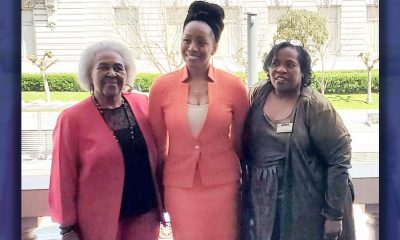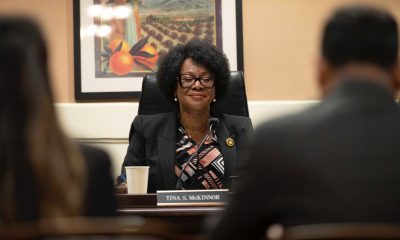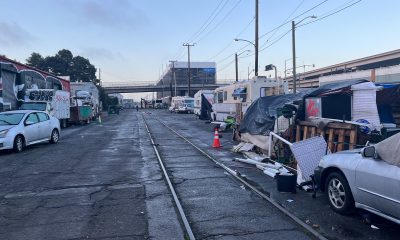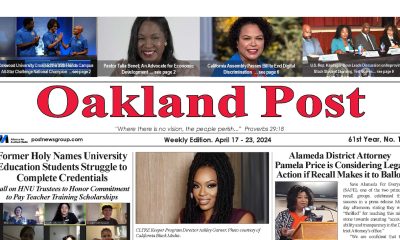NAACP
Stockton NAACP Urges Community to Vote in Special Election on Sept. 14
While August 30 was the last day to register, Californians can still conditionally register at any vote center.
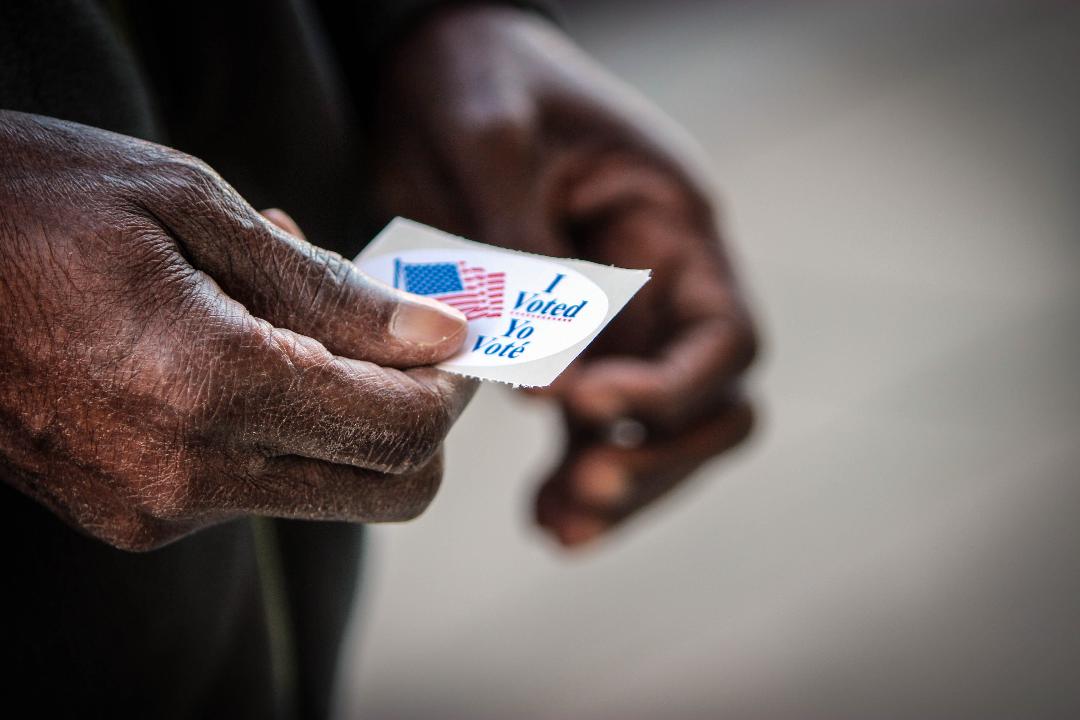
With a special election to recall democratic Gov. Gavin Newsom less than a week away, the president of the Stockton Branch of the NAACP is encouraging all eligible citizens to vote on September 14. “It’s one of the only ways you ensure your voice will be heard,” he said.
The branch president, Bobby Bivens, sat down with The Post News Group publisher Paul Cobb to help make sure registered and even unregistered citizens know how to vote safe and exercise their civic duty.
“While August 30 was the last day to register, Californians can still conditionally register at any vote center. This step can be taken any time in the run-up to the election and includes Election Day as well. The bottom line is that those Californians still wishing to vote can do so,” said Bivens.
Bivens also shared that the best way to ensure your vote counts is by dropping off your ballot at a vote center. It must be delivered by the time polls close – 8:00 p.m. – on September 14. If you are mailing your ballot, all you have to do is ensure that it is postmarked before September 14 and received by your county elections office no later than September 21.
Bivens said that you can track your ballot by using the BallotTrax tool, available at https://california.ballottrax.net/voter/. ; this easy-to-use tracker will allow you to see the status of your vote, including when it has been counted.
To see the full interview go to our @oaklandpostnews Facebook page.
The Stockton Post’s coverage of local news in San Joaquin County is supported by the Ethnic Media Sustainability Initiative, a program created by California Black Media and Ethnic Media Services to support community newspapers across California.
Activism
CA/Hawaii NAACP Conference: “Dismantling Racism and Disrupting Inequality”
: Ida B. Wells-Barnett (1862–1931), a Black investigative journalist, women’s rights activist, and civil rights advocate, is renowned for her campaign against lynching. Wells-Barnett was instrumental in shaping public opinion against lynching through her newspaper editorials, pamphlets, clubs, and lecture tours across the northern United States.
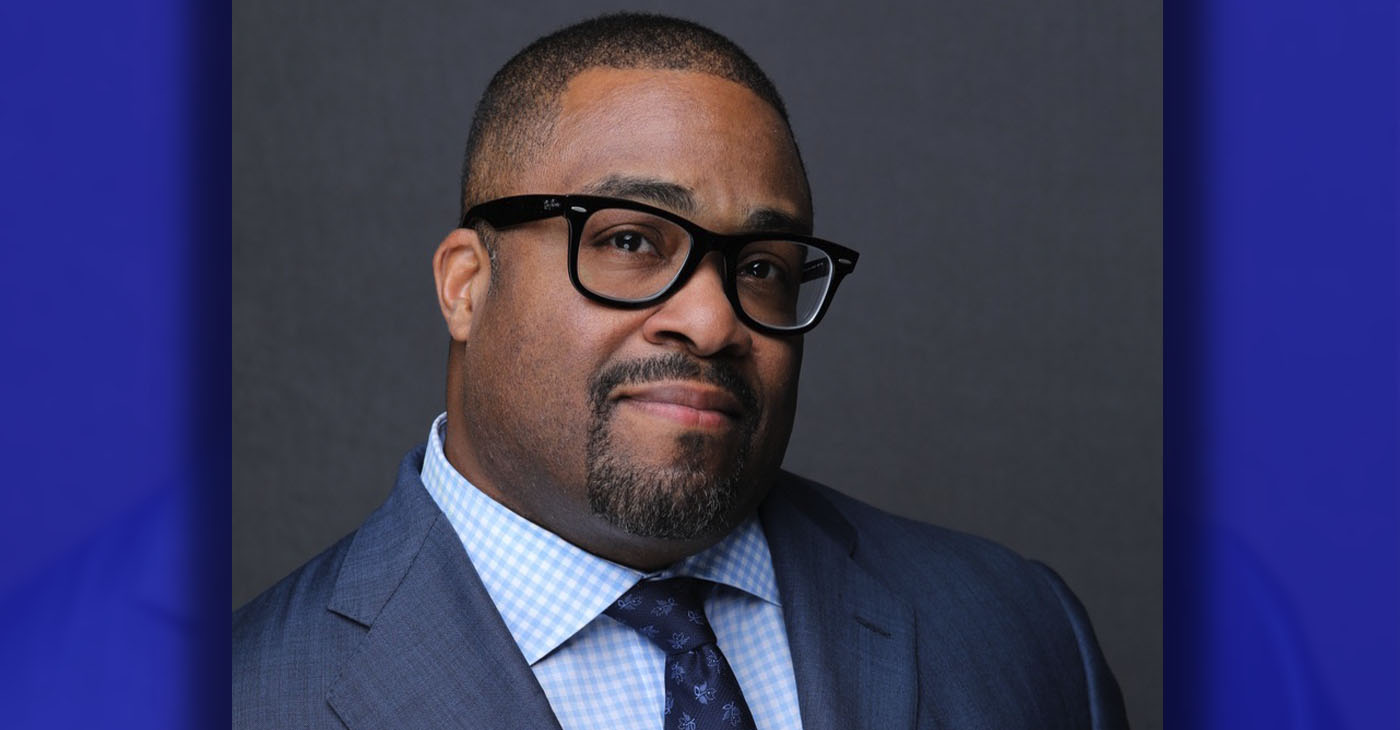
By Antonio Ray Harvey
California Black Media
Ida B. Wells-Barnett (1862–1931), a Black investigative journalist, women’s rights activist, and civil rights advocate, is renowned for her campaign against lynching.
Wells-Barnett was instrumental in shaping public opinion against lynching through her newspaper editorials, pamphlets, clubs, and lecture tours across the northern United States. Wells held the position of secretary in the Afro-American Council, where she led its anti-lynching bureau. Her efforts paved the way for the National Association for the Advancement of Colored People’s (NAACP) anti-lynching campaign.
Following the racial violence of the 1908 Springfield massacre in Illinois, the NAACP was founded on Feb. 12, 1909. The organization was established by over 60 founding members, including Wells- Barnett, W. E. B. Du Bois, Mary McLeod Bethune, William Bulkley, the Rev. Francis Grimke, and Mary Church Terrell, among others.
The NAACP’s principal objective is to secure political, educational, social, and economic equality for minority groups in the United States and eradicate racial prejudice. As a service organization, it aims to remove all barriers of racial discrimination through democratic processes.
The NAACP is America’s oldest and largest civil rights organization and today comprises a network of over 2,200 affiliates spanning all 50 states, the District of Columbia, Japan, and Germany. Headquartered in Baltimore, its membership exceeds 500,000.
The NAACP California-Hawaii State Conference, with its 72 branches and youth units, is actively engaged across both states to promote racial justice and equality.
Rick L. Callender, who serves as president of the NAACP’s California/Hawaii State Conference and is a member of the National NAACP Board of Directors, spoke with California Black Media about the work the state conference is doing.
What does your organization do to improve the lives of Black people in California?
We’re committed to dismantling racism and disrupting inequality to create a society where all people can truly be free. Our efforts encompass active civic engagement, systematically fostering racial equity, and championing policies and institutions that urgently address the specific needs of Black communities, who bear the brunt of race- based discrimination.
What was your greatest success over the course of the last year?
(We) have been sticking to our long-lived goal of fighting for justice and prioritizing our community’s needs. In the past year, we notched up some significant victories with Gov. Newsom signing three of our priority bills into law, namely Assembly Bill (AB) 1327, Senate Bill (SB) 673, and Assembly Bill 1165.
AB 1327 addresses a standing problem that many California high school student-athletes of color have dealt with: racism during high school sporting contests. The bill mandates … (the creation of) a standardized form for recording hate violence and hazing incidents at high school sporting events.
SB 673, authored by Sen. Steve Bradford (D-Inglewood), guarantees that Black children and young Black women will receive the attention and protection they need when they are reported missing.
AB 1165, authored by Assemblymember Kevin McCarty (D- Sacramento), addresses racism on school campuses by encouraging schools to implement a restorative justice practice when a student has perpetrated racist bullying, harassment, or intimidation.
In your view, what is the biggest challenge Black Californians face?
The (Conference) is on a mission for total racial equity, delving into realms like health, housing, education, economic development, criminal justice, and environmental wellbeing.
What was your organization’s biggest challenge?
Just like all nonprofits, funding the efforts are always at the forefront. Secondly, generating a base of trained and engaged volunteers also creates a challenge.
Does your organization support or plan to get involved in the push for reparations in California?
We are and have been at the forefront in the battle for reparations at the national, state and local levels. NAACP San Francisco President, Rev. Amos Brown, is also at the forefront of the reparations’ movement in California, not just as a participant but as a key player.
How can more Californians of all backgrounds get involved in the work you’re doing?
Join the NAACP to get involved with activists and organizers in your local NAACP branch and stand tall against injustice, dismantle systemic racism.
Activism
San Francisco Mid-Year Budget Cuts Leaves Office of Reparations in the Wind
In an October letter sent to department heads, Breed stated that the city is projected to face a $500 million deficit by the 2025-26 fiscal year. These budget cuts will ensure that the city can continue to invest in its top priorities. This means cutting proposed programs that have not yet started, including the Office of Reparations.
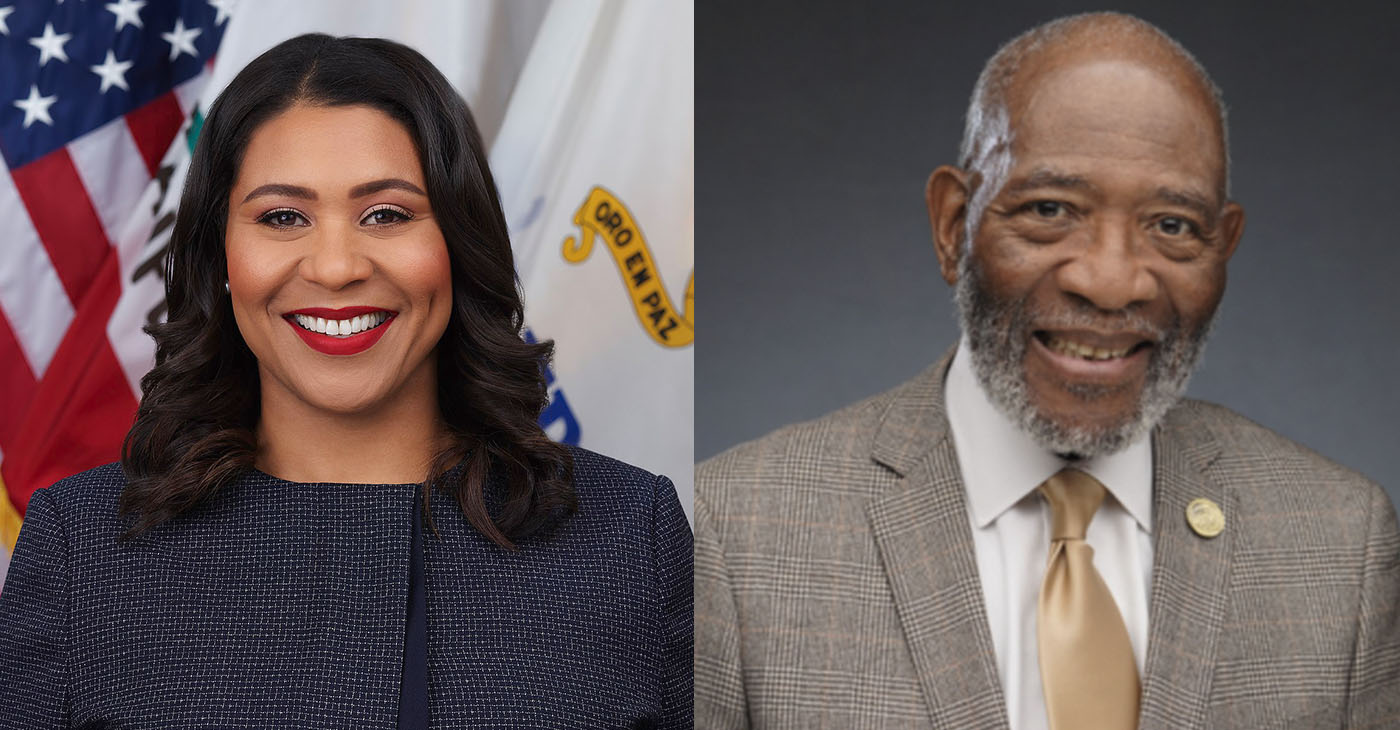
By Magaly Muñoz
Earlier this month, San Francisco Mayor London Breed approved $75 million in mid-year budget cuts, which included $4 million that was intended for the first of its kind Office of Reparations.
The funds had originally been approved in a June Board of Supervisors meeting to establish the reparations office in city hall and fund it for two years but is now on the chopping block to conserve spending in the city is still dealing as it grapples with the severe impacts of the pandemic.
In an October letter sent to department heads, Breed stated that the city is projected to face a $500 million deficit by the 2025-26 fiscal year. These budget cuts will ensure that the city can continue to invest in its top priorities. This means cutting proposed programs that have not yet started, including the Office of Reparations.
Breed has long been criticized for her stance on the issue of reparations coming from the local level, stating her belief that any payments to individuals should be handled at the federal level.
“The Mayor also does not believe that addressing the needs of the African American community requires adding more bureaucracy and a whole new office; this work can be done with existing staffing,” said Parisa Safarzadeh, the mayor’s press secretary, in an email to the Post.
Safarzadeh explained that Breed has and will continue to uplift marginalized communities with programs like the Dreamkeeper Initiative (DKI) to address inequities in the African American community and Opportunities for All, which provides all high school students in San Francisco with a paid internship.
Reverend Amos Brown, a member of the SF African American Reparations Advisory Committee (SFAARAC), expressed that while monetary compensation doesn’t have to be distributed locally, public policies should be enacted to address the racial gap and inequities of the Black community.
“They need to move forward with deliberate speed, working with the Black community to ensure that the low-hanging fruit is delivered regarding health care services, education, economic empowerment, jobs, and restorative justice programs for those coming out of this criminal justice system. That would give us reparations,” Brown said.
The SFAARAC was formed in December 2020 to research and develop recommendations for repairing the harm done to the Black community of San Francisco.
In July, they submitted their final report of recommendations to the mayor and Board of Supervisors. The report proposed a payout of $5 million to individuals who could prove direct ancestral ties to slavery and included other recommendations aimed at improving education, health, and economic development.
Efforts to implement reparations on a national level have largely been unsuccessful. However, advocates like Kamm Howard continue pushing for a committee’s establishment as we approach an election year.
He says that the Biden administration should issue an executive order establishing a reparations committee because it would show his commitment to uplifting Black people in America, as they are the largest voter group after white voters. He needs the Black vote to win another presidential election.
In 2022, Howard founded Reparations United to provide guidance and leadership to coalitions and activists involved in the reparations movement. He also led the revisions to the federal bill H.R. 40, which seeks to establish a commission to study and develop reparation proposals for African Americans.
Howard expressed that even if individuals today claim they aren’t racist or their ancestors didn’t own slaves, everyone has to contribute to the repairs that address the generational damage inflicted on Black and African Americans.
“Everyone who benefits from the status of America and the wealth of America, all has to contribute to the remedy of unjust actions by this country,” Howard said.
He says that local and state governments also owe it to their Black citizens to acknowledge the harm that their policies and laws have done to them. All states have the power to enact change and form committees, like California has attempted to do with their state Reparations Task Force, and should be supported at every level of government.
Brown said it should not take so long to put a plan in action to give some sort of restorative justice back to the community. He points out that the fight is about much more than allocating $4 million for a department for reparations, which is an insulting number to fight about when the rightful compensation owed to African Americans is many times greater.
“It’s time for San Francisco to lead the way and respect the humanity of Black people,” Brown said.
California Black Media
Bullying in California: In Some School Districts, Black Students are Targeted by Their Latino Peers
On Feb. 16, 2022, a Black student in the Santa Barbara Unified School District was assaulted by Latino students. His attackers called him the N-word and kneeled on his neck while repeatedly chanting the name “George Floyd.” A district-wide acknowledgment of the hate crime was sent six days later. Despite the psychological trauma this student experienced, the school did little to provide him with mental health support.

By Edward Henderson
California Black Media
On Feb. 16, 2022, a Black student in the Santa Barbara Unified School District was assaulted by Latino students. His attackers called him the N-word and kneeled on his neck while repeatedly chanting the name “George Floyd.” A district-wide acknowledgment of the hate crime was sent six days later.
Despite the psychological trauma this student experienced, the school did little to provide him with mental health support.
Connie Alexander-Boaitey, the president of the Santa Barbara branch of the NAACP, says African Americans are often minimized in her city due to being the smallest demographic group.
Alexander-Boaitey spoke during an Oct. 27 news briefing hosted by Ethnic Media Services on school bullying.
She was joined by Becky L. Monroe, the deputy director of strategic initiatives and external affairs at the California Civil Rights Department; Dashka Slater, an award-winning journalist and author who has written books about child bullying victims; and Mina Fedor, a young Asian American activist who founded the organization AAPI Youth Rising.
Alexander-Boaitey said the hate crimes and incidents affecting children are all connected to “generational pain” for Black Americans. Primarily, there is “a pervasive calling of the N-word by young Latino students,” she said. “It’s every day. It’s weekly.”
She said that a Black family in Santa Barbara now walks their child to school to protect her from bullying classmates, and another has pulled their daughter out of the school system completely, opting for homeschooling.
The Santa Barbara Unified School District commissioned a survey titled “2023 Anti-Blackness and Racial Climate Assessment and Analysis” that proposed a set of recommendations for addressing the problem.
The hate incidents targeting African American children are increasing across California, according to the NAACP. These incidents, often involving physical violence and verbal abuse, are more frequent as Black families relocate to predominantly Latino neighborhoods.
In Santa Barbara, African Americans make up only 2% of the population but account for the most victims of bullying and hate crimes in the area. At 47.5%, Latinos make up the majority of Santa Barbara’s population followed by white people at 43.5%. According to the local NAACP branch, most of the perpetrators of the bullying and hate crimes are Latino children.
Alexander-Boaitey says she believes the hate incidents are rooted in historic racism and connected to a general desire to make Black people invisible — expressed through one racially oppressed group pushing out another in an attempt to get closer to whiteness.
According to Dashka Slater, 3 in 4 Americans of ages 15 to 25 have run into extremist content online. One in four students between the ages of 12 and 18 have seen hateful graffiti in their schools. About 1.3 million students were bullied because of some aspect of their identity during the 2018-2019 school year, and half of those children were targeted because of their race.
“Some forms of bullying are, in fact, acts of hate,” said Monroe. “Some acts of hate are crimes, while others are violations of other civil rights laws. Some may be lawful but incredibly harmful, nonetheless. We must recognize the civil rights issues at the heart of this discussion around bullying.”
Monroe also spoke about the state law requiring schools to provide all students with a safe environment free of harassment.
“Schools have a legal obligation to ensure that students are not denied opportunities, treated differently, discriminated against, or harassed because of their race, color, national origin, gender, gender identity, sexual orientation, religion, or disability,” she said.
Studies have shown that students who perpetuate racially motivated bullying don’t necessarily ascribe to racist ideologies but are simply influenced by outside sources or mirroring behavior from their parents or guardians at home.
Alexander-Boaitey says Black and Latino leaders and residents from the area have not formally met yet to resolve tensions brewing between their communities.
“I know this is where the struggle really is,” she added. “We have to actually sit down and have our own conversations. Has it happened? No, it has not happened … What supports it not happening is the erasure culture that says, no, we don’t really need to talk about that, oh, it was just a single incident.”
The state of California provides resources for victims of hate crimes or incidents. Victims or witnesses can report a hate crime or incident https://stophate.calcivilrights.ca.gov/s/
They can also call 833-8-NO-HATE; (833) 866-4283 Monday-Friday from 9 a.m.-6 p.m. or call 211.
This California Black Media report was supported in whole or in part by funding provided by the State of California, administered by the California State Library.
-

 Activism4 weeks ago
Activism4 weeks agoOakland Post: Week of March 27 – April 2, 2024
-

 #NNPA BlackPress4 weeks ago
#NNPA BlackPress4 weeks agoCOMMENTARY: D.C. Crime Bill Fails to Address Root Causes of Violence and Incarceration
-

 #NNPA BlackPress4 weeks ago
#NNPA BlackPress4 weeks agoFrom Raids to Revelations: The Dark Turn in Sean ‘Diddy’ Combs’ Saga
-

 #NNPA BlackPress4 weeks ago
#NNPA BlackPress4 weeks agoCOMMENTARY: Lady Day and The Lights!
-

 #NNPA BlackPress4 weeks ago
#NNPA BlackPress4 weeks agoMayor, City Council President React to May 31 Closing of Birmingham-Southern College
-

 #NNPA BlackPress4 weeks ago
#NNPA BlackPress4 weeks agoBaltimore Key Bridge Catastrophe: A City’s Heartbreak and a Nation’s Alarm
-

 #NNPA BlackPress4 weeks ago
#NNPA BlackPress4 weeks agoBaltimore’s Key Bridge Struck by Ship, Collapses into Water
-

 #NNPA BlackPress4 weeks ago
#NNPA BlackPress4 weeks agoBeloved Actor and Activist Louis Cameron Gossett Jr. Dies at 87

